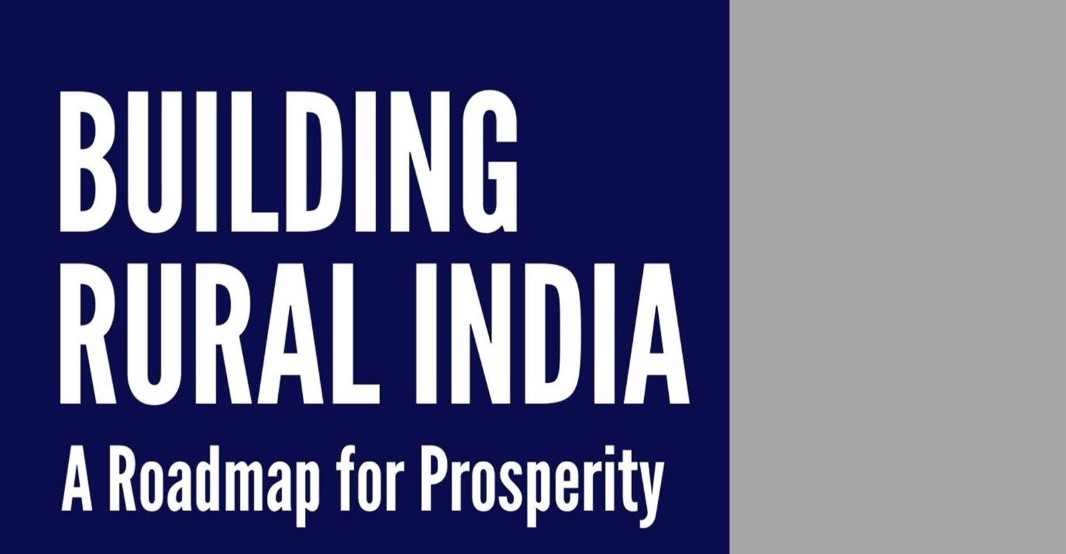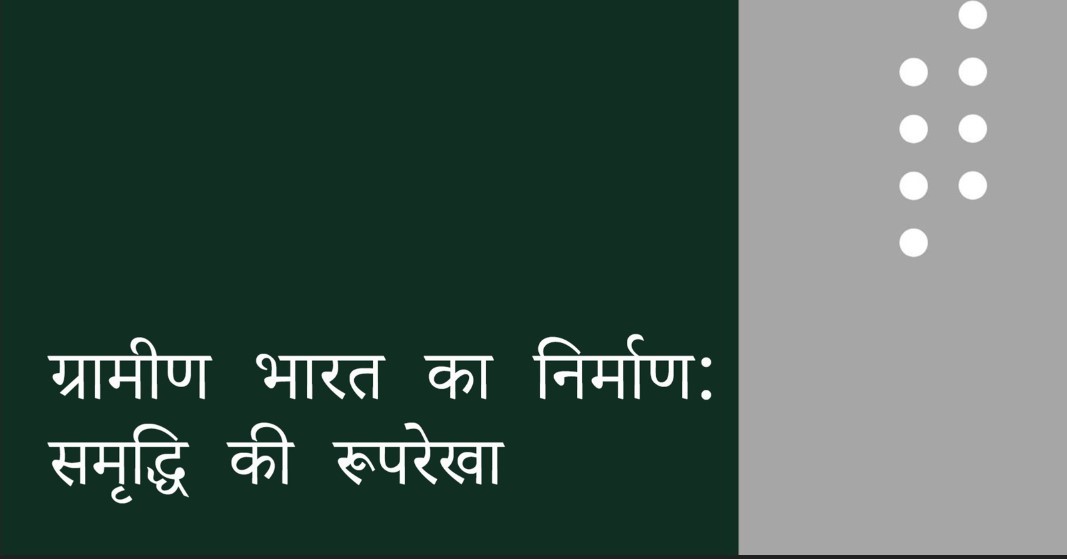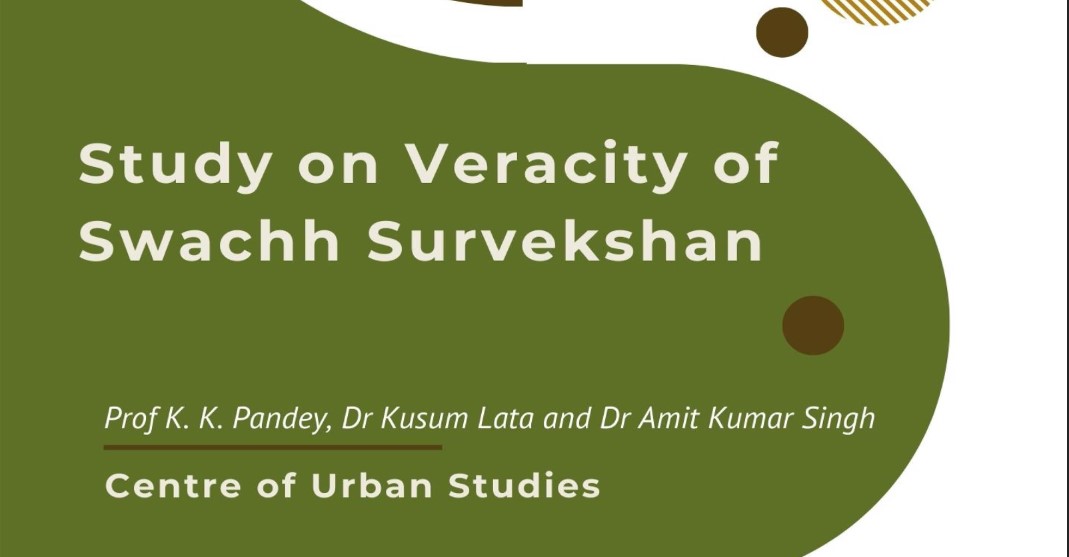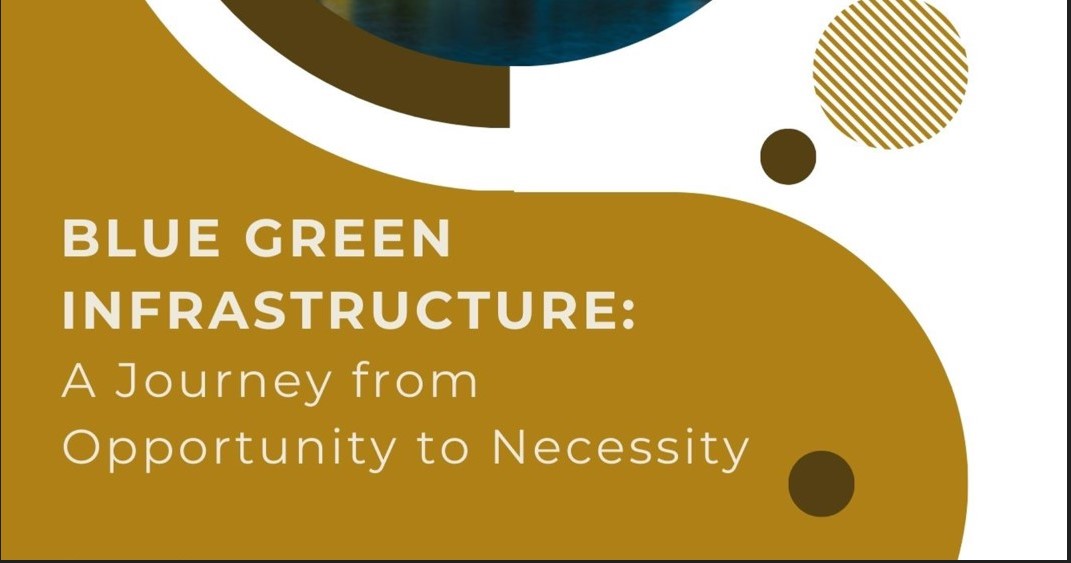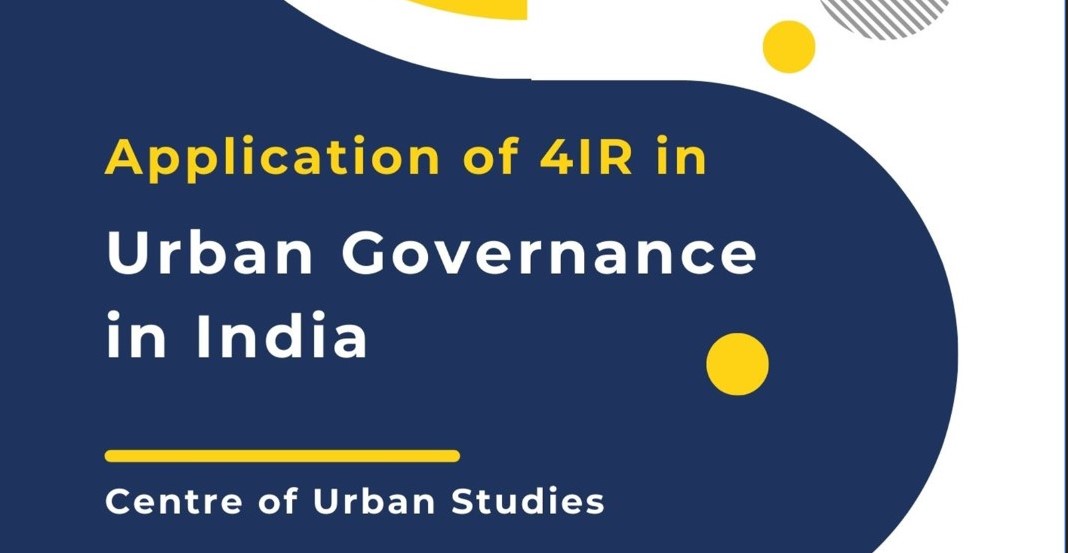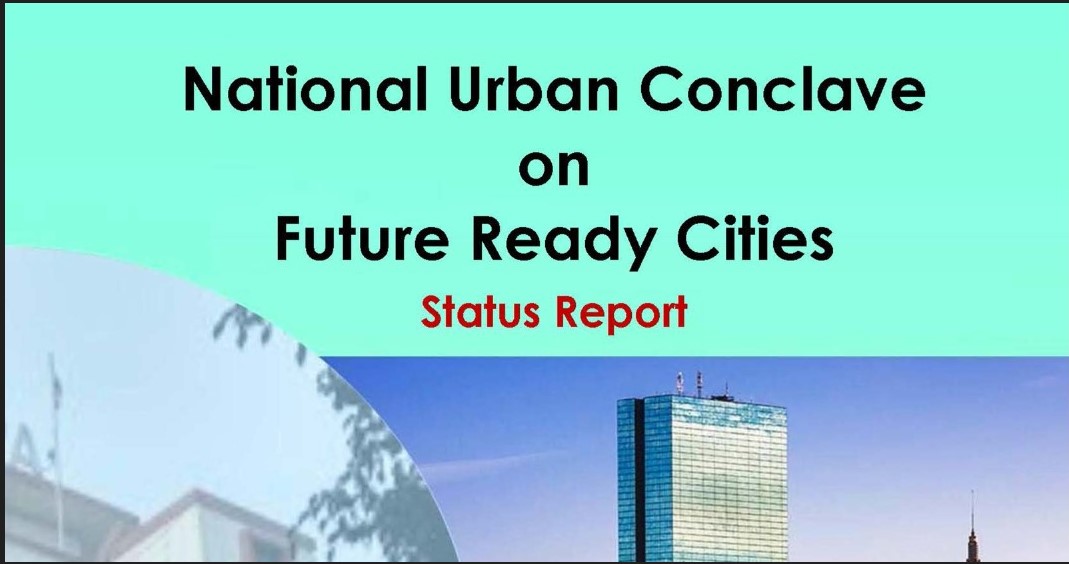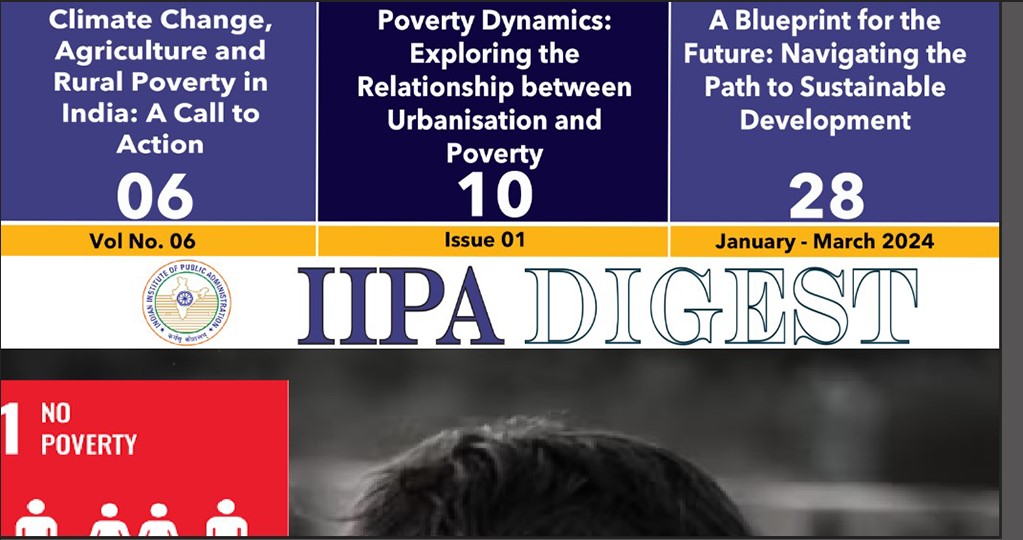Formalising the Rural Economy: Strategies for Transition from Informal to Formal Sectors
Abstract
Last one decade has witnessed unprecedented coverage of micro enterprises and workers from rural areas under specific schemes and facilitation. This covers financial inclusion (PM Jan Dhan Yojana: 540 million bank accounts with vast majority in rural areas), registration under GoI schemes on credit access, skill transfer and marketing (Udyam Assist, PM Vishwakarma etc.), access to 37 percent of 73 million unincorporated micro enterprises (over half from rural areas), assistance for 38 million affordable houses, relaxation of GST compliances along with drastic rationalization of GST rates and over 70 million registrations under Employee Provident Fund.
The process of formalization has yielded positive results with digital inclusion, direct benefit transfer and remarkable decline in rural poverty (25.17% in 2011-12 to 7.2 in 2022-23 and 4.86 in 2023-24). At the same time, the scope to continue the formalization is fairly wide to cover the remaining enterprises and workers and continue the assistance to consolidate the gains further for a sustainable livelihood.
Key words: Rural micro enterprises, Transition Strategies, Credit Access, Skill Development and Marketing
Introduction
Rural India accommodates around sixty five percent of Indian population with around one third share of GDP2 indicating significantly low levels of rural productivity in a ratio of 2:1 in its share population and GDP (Gross Domestic Product) It is in this context that successive governments have placed special focus on rural development. These efforts include special drives in last ten years and have yielded positive results to transform livelihood, socio-economic inclusion, effective integration, and empowerment in rural India3. These specific drives among others includes Digital connectivity, Skills and employment, Infrastructure and linkages and Social Sector Schemes4 (Box 1). A brief, pointed and critical examination of rural economy along with key strategies is attempted in the following analyses.
Rural Economy: Size, Income and Employment Conditions
Rural economy is predominantly agrarian with Agriculture sector as its backbone with 70 percent of workforce (45% Indian workforce) deployed in agriculture sector5. On the other hand, the agriculture sector alone has access to only half of rural GDP indicating a further mismatch in its size of workforce (nearly three fourth) and its income within rural economy itself. Accordingly entire rural economy covering agriculture, rural industries and services sector deserves special attention to stimulate Indian GDP6. In this regard informal sector dominating the rural economy with almost 99% of its share in the total workforce has vast potential and a matter of further support and handholding.
Overall earnings of rural workforce are particularly low and have been a focus of successive policies and programs. It is important to note that:
• The average monthly income of rural workforce for self-employed is only Rs. 7,585/- per month as compared to national average of Rs 10,331/-. (Table 1).
Table 1: Average Monthly Earnings by Nature of Employment (Rs.)
• The salaried class rural workforce if compared to their urban counterpart show similar trends as in case of self-employed with monthly earnings of Rs. 16,817/- and Rs. 21,129/- respectively.
• salaried class workers on written contract earn fairly well as compared to these with no contract, it being Rs. 28,800/- and Rs. 20,071/- respectively.
• The rural workforce again shows a poor status with monthly earnings of Rs 23,879/- as compared to national average and urban counterpart Rs. 28,800/- and Rs. 31,242/- respectively.
• Earnings of casual workers in urban and rural areas do not have similar variation being Rs. 9,990 p.m. to Rs. 8,628 p.m.
Rural Unincorporated Sector Enterprises
Rural unincorporated enterprises dominate the rural non agriculture sector workforce. It covered 55 percent of 6.5 Crore enterprises in India in 2022-23 providing employment to 10.9 crore workers. (Table 2) These workers are almost evenly divided in urban and rural areas and are employed in unincorporated informal enterprises engaged in retail trade, manufacturing of apparel and other community social and personal services.
Table 2: Unincorporated Sector in Rural India
Progress in 2023-24
Data on unincorporated enterprises and workers employed also show significant increase in the number and workers employed in these establishments. On the whole these enterprises have shown 12.84% increase with a net increase of eight million enterprises during 2022-23 to 2023-23 whereas number of workers has increased by 11 million or 10.01% during the same period. It is further important to note that 37% workers are registered with at least one authority showing increasing trend of registration and thereby success of government strategy to formalize unincorporated sector enterprises7.
Table 3: Unincorporated Sector Enterprises and Workers Employed 2022 to 2024
The formalization of unincorporated sector is also confirmed by figures obtained from Employee Provident Fund Organisation which indicate remarkable growth in registration of workers on year-to-year basis (Chart 1). It is noted that during September 2017 to July 2024 nearly seven crore workers have been registered by EPFO8.
Chart 1: Registration of workers: EPFO
Strategies to formalise the informal sector in Rural India
The low levels of productivity in the rural workforce (including women) are key areas of policy concern. Accordingly, policies, programs and strategies to formalise rural workforce to enhance its income and employment have been evolved. Key components of respective strategies are given in Box-1.
Three important initiatives i.e. (1) JAM (Jandhan, Aadhaar and Mobile), (2) UDYAM Registration and GST (Goods and Services Tax) need special mention in their role to formalise rural economy.
JAM
JAM (Jan Dhan, Aadhaar and Mobile) Yojana has been a game changer in India to achieve inclusive growth with regional balance. More than 540 million accounts with a balance of Rs 239 million (15 times more since its inception) have brought world’s largest financial inclusion of poor enabling them access to banking system (deposit /credit), financial education and access to insurance and social security. The scheme has specifically benefitted rural and semi-urban areas covering almost two third of beneficiaries from these segments9. (Box 2)
UDYAM Registration
UDYAM portal is one of the most effective initiatives of Ministry of Micro Small and Medium Enterprises (MSME), Government of India to register all MSMEs and especially include micro (Nano) enterprises in the formal system to open avenues for their financial growth, technology adaptation, access to raw material and better marketing facilities. The enterprises registered in the udyam portal include all rural and urban enterprises.
As on 12th August 2025 a total 66.89 million enterprises are registered having 290 million employments. These include Udyam Assist registration covering 27 million micro enterprises proving employment to 33.29 million people10. (Chart 2)
Chart 2: UDYAM Registration (as on 12th August 2025)
UDYAM registration opens the access to numerous MSME schemes and other schemes of government of India as elaborated in Chart 1 above. After registration these MSMEs can avail benefits under TReDS (Trade Receivable Discounting System) program wherein faster payment cycles, improved liquidity and transparency are ensured. TReDS brings suppliers on board and promote timely payment, inclusive growth and digital financing.
Udyam Assist is another unique initiative to formalise informal micro enterprises (IMEs) from rural and urban areas to enable them to have access to priority sector lensing. It provides a pathway to access MSME schemes. As on 4 August 2025 as many as 27473169 IMEs have registered on the Udyam Assist Portal which are providing employment to 3,32,35,040 persons in rural and urban areas.
GST (Goods and Services Tax)
GST has been a mark departure from convention tax system and was introduced on July 01, 2017 with one nation one tax principle subsuming a long list of taxes and making compliance easier for respective business. It has also, during last eight years, shown quantum jump in collection and thus benefiting liquidity in the public finance for development of infrastructure and social equity. (Box-3)
GST has the potential to significantly benefit India's rural economy promoting greater economic activity, formalisation of businesses and enterprises for better market access. It has also simplified compliance burdens, facilitated digital process, to benefit small and medium sized tax payers. It is therefore a competent model for fiscal federalism and digital public infrastructure in the context of rural economy and informal sector enterprises11. GST simplification on compliance has resulted into better tax administration, coverage and facilitation of tax payers12.
GST, Ease of Compliance and Small Businesses
GST has brought major relief to micro, small and medium enterprises. Earlier, thresholds under VAT and other state taxes were fairly low, making compliance difficult for small businesses. GST altered the cumbersome process with a higher exemption limit. Initially the limit was fixed at ₹20 lakhs which was later raised to ₹40 lakhs, helping small traders and manufacturers. To ease the burden further, GST introduced a Composition Levy Scheme. (Box-3) This allows small businesses to pay tax at a fixed rate on their turnover, with minimal paperwork. The scheme covers goods up to ₹1.5 crore and services up to ₹50 lakh in annual turnover.
Registration and refund process has also been simplified w.e.f. November 01,2025 benefitting 96 % of applicants through automated registration within three hours of application for small businesses with tax liability upto Rs.2.5 lakh per month.
GST has also opened doors for easier access to credit through TReDS (Trade Receivables Discounting System) a platform for financing/discounting of trade receivables of MSMEs. Four digital platforms have been authorized to carry TReDS operations in the country. There are more than 5,000 buyers and over 53 Banks/13 NBFCs registered as financers13.
Filing return has been made faster and simpler. Small taxpayers (< Rs 5 crore turnover) can now file quarterly return in place of monthly system. They can now file NIL returns through SMS. This service is also available for GSTR-1 and CMP-08, making return filing faster and simpler.
The compliance ecosystem has also evolved. With over 90 per cent of GST returns filed on time in recent months, the system has seen substantial behavioural change. Tax authorities now leverage AI-based tools for risk profiling, leading to targeted audits and reduced evasion.
GST has seen a quantum jump in registered taxpayers since its inception year 2017 to 2025 being seven million to 14.6 million with two third small tax payers having already formalised parts of rural informal sector. It also shows a vast potential of GST to formalise rural economy for better business environment and market access.
Impact of Transition Strategies on Formalisation of rural Economy
The policies, programs and schemes as elaborated earlier have made significantly positive impact to streamline rural enterprises and workforce towards their access to banking, finance, insurance and social security. It is specifically noted that:
i. PM Jan Dhan Yojana, as part of JAM trinity, with 540 million accounts with a balance of Rs 239 million (15 times more since its inception) has brought world’s largest financial inclusion of poor enabling them access to banking system (deposit /credit), financial education and access to insurance and social security. The scheme has specifically benefitted rural and semi-urban areas covering almost two third of beneficiaries from these segments.
ii. Other two components of JAM (Aadhaar and Mobile) Yojana supported by its digital and banking footprints have helped the nation to bring 240 million people above the poverty line and register world’s largest social inclusion in the last ten years
iii. Udyam Assist- a digital platform to register micro enterprises has since its launch in January 2023 has covered as many as 2.74 crore enterprises providing employment to 3.32 crore persons. At the same time EPFO has also registered over seven crore members during 2017 to 2024. Udyam assist includes a large number of rural enterprises which are stated be a little more than half of the total Micro Small Enterprises (MSEs)
iv. India’s digital payment system has undergone phenomenal increase in last six years with over 65000 crores of digital transactions amounting to more than Rs.12000 lakh crores making India a global leader in this domain constituting more than 49 percent of real time transactions happening in the world.
v. Specific schemes have yielded positive results such as (a) composite credit scheme for micro enterprises, (b) labour intensive cluster development and skill building, (c) PM Vishwakarma (2.7 million) for 5-day basic training and collateral free loan, (d) PMEGP and (e) Public Procurement Policy in 2023-24 have covered 49% procurements from micro enterprises benefiting rural and urban SMEs.
vi. A sizable number, 37% of 73 million unincorporated enterprises (evenly divided in urban and rural areas) are reported to be covered in one or other scheme of GoI/state.
vii. The above initiatives have brought a large number of labour force under EPFO (Employees’ Provident Fund Organisation) network with a whopping 70 million members including a substantial beneficiary from rural areas during 2017 to 2025.
viii. Pradhan Mantri Avas Yojana (Gramin) has achieved remarkable outreach with sanctions of 3.84 crore houses along with completion of 2.81 crore houses out of a target of 4.12 ceore houses in rural India across the states and UTs
ix. GST has made compliance easier and registered large number of MSEs in the GSTN (GST Network portal) with 98% online taxpayers and receipt of more than 5 crores invoices. The Composition Levy Scheme and QRMP (Quarterly Return Monthly Payment) have reduced compliance for 70% of GST payers covering a majority of rural and semi-urban areas.
x. Social security including access to Ayushman Bharat, better working conditions and financial inclusion has been achieved resulting into poverty reduction and overall development of rural areas.
xi. As per World Bank report, India has lifted 171 million people out of extreme poverty during 2011-12 to 2022-23 with decline of people living below extreme poverty (2.15 dollar a day) from 16.2 percent to 2.3 percent. Further, the rural extreme poverty has declined from 18.4 percent to 2.8 percent and the gap between urban and rural poverty has shrunk from 7.7 percentage to 1.7 percentage points during the same period14.
xii. The SBI report on Consumption Expenditure Survey indicate that overall rural poverty has declined from 25.17 percent in 2011-12 to 7.2 percent in 2022-23 and has further declined to 4.86 percent in 2023-24.15
Formalising the Rural Economy: Strategies for Transitioning from Informal to Formal Sectors
Empirical evidence as above suggests that specific initiatives taken to formalise unorganized sector have facilitated a large chunk of rural workforce to have direct access to credit, banking, insurance, government subsidy and social security sector schemes and programs. Yet, the scope is fairly wide to act further in view of backlog of uncovered micro-enterprises (almost evenly divided between rural and urban areas) being around 5.33 crore along with a large number of workers employed, persons below poverty line and not yet availing specific social sector schemes such as PM AYUSHMAN Bharat, PM Avas Yojana etc. Accordingly, a range of specific actions to be considered for further follow up:
i. Schemes for credit guarantee, concessional loans, skill development, and procurement support to small and micro enterprises (SMEs) should continue to sustain formalisation of rural SMEs.
ii. Scheme for food subsidy should also continue to ensure that rural workforce remains above poverty line.
iii. Further support to JAM (scheme to link Jan Dhan Accounts, Mobile numbers and Aadhaar) trinity should be initiated to consolidate and deepen their effect for higher productivity and regular income.
iv. Specific publicity and awareness should be given in this regard on financial education to account holders of PMJDY (PM Jan Dhan Yojana) along with due exposure on social sector schemes and state specific schemes/programs, if any,
v. Compliance burden of GST should be reduced further by relaxing Composition Levy Scheme and extending QRMP (Quarterly Payment) to HRMP (Half Yearly Return on Monthly Payment) for SMEs.
vi. PM Ayushman Bharat should be relaxed further to its applicants directly on production of Aadhaar Card rather than exclusive registration in the scheme.
vii. The monthly pension being given to eligible EPFO account holder (after 58 years of age) should undergo upward revision at a reasonable amount along with further increase in line with inflation.
viii. Registration under Udyam Assist should be expanded with special drive-in rural areas taking support from respective gram (village) panchayat.
ix. All MEs should be strengthened further to integrate them with a supply chain for small and medium enterprises in rural and urban areas including the cluster development under specific schemes of MSME.
x. All types of credit support should be based on tranche subject to repayment on earlier disbursement.
xi. Automatic mobile access to receive financial support should be extended to MSEs in consultation with Banks to minimize red tapism in procedure to access respective branch.
Finally, India is undergoing a rapid pace of transition to formalise rural economy to integrate rural areas in the process of economic development and nation building as per our vision to make India a developed nation @2047. Yet, the backlog is still fairly large and additional strategies would be needed in addition to due continuation of existing efforts.
References
1. https://www.pib.gov.in/PressReleasePage.aspx?PRID=1894901
2. https://bizconsulting.io/msme-schemes-for-rural-development/
3. https://www.niti.gov.in/sites/default/files/2021-08/11_Rural_Economy_Discussion_Paper_0.pdf
4. https://bcom.institute/indian-economy/low-agricultural-productivity-india/#google_vignette
5. ASUSE result for 2023-24, Ministry of statistics and Program implementation, 25 January 2025.
6. GoI, PIB,14 November 2024, Transition of India’s Economy towards Formalisation
7. https://www.pib.gov.in/PressReleasePage.aspx?PRID=2086611#:~:text=At%20present%2C%20there%20are%20more,accounts%20coming%20from%20these%20regions
8. Annual Report, 2022-23, MSME, GoI.
9. Deloitte GST @8: Learning from the past, Defining the Future
10. https://www.pib.gov.in/PressNoteDetails.aspx?NoteId=154789&ModuleId=3
11. SIDBI, 23 June 2025.
12. Ministry of Information and broadcasting, GoI,26 April 2025, India’s Triumph in Combating Poverty.
13. Financial Express, January 04,2025: Poverty Below 5 percent, Urban Rural Gap Reducing; SBI Research
Leave a comment
More articles from Urban & Rural Areas
